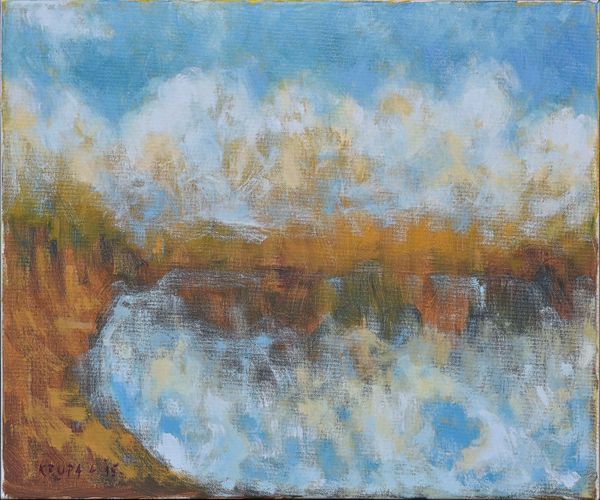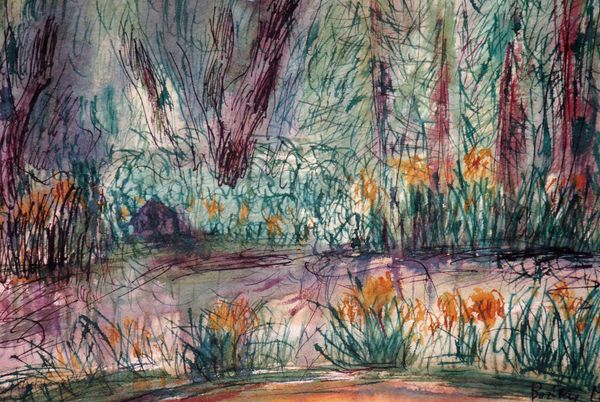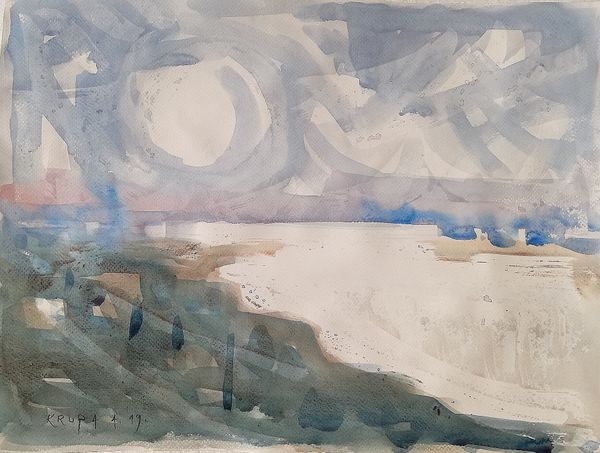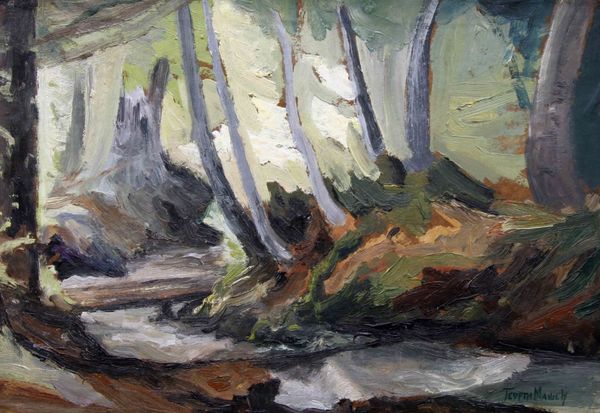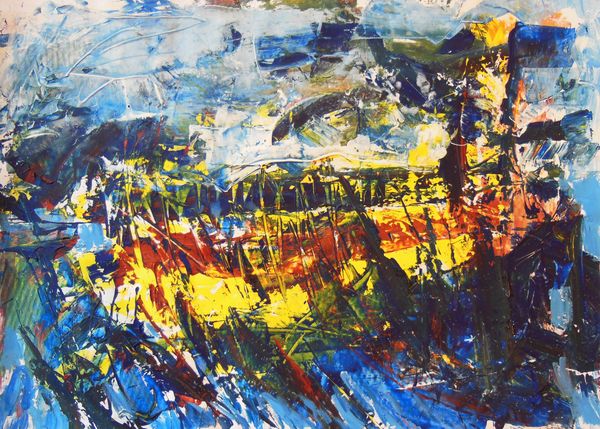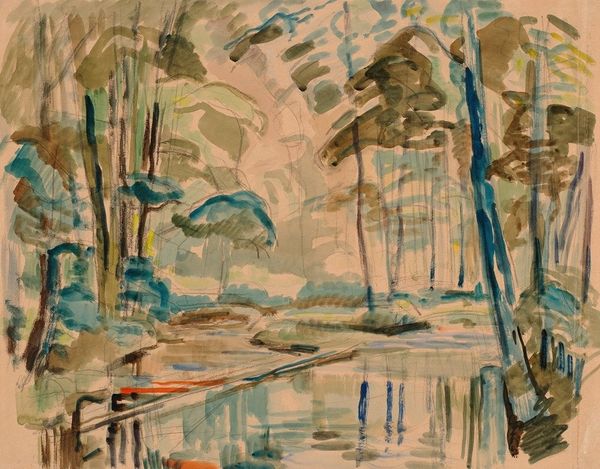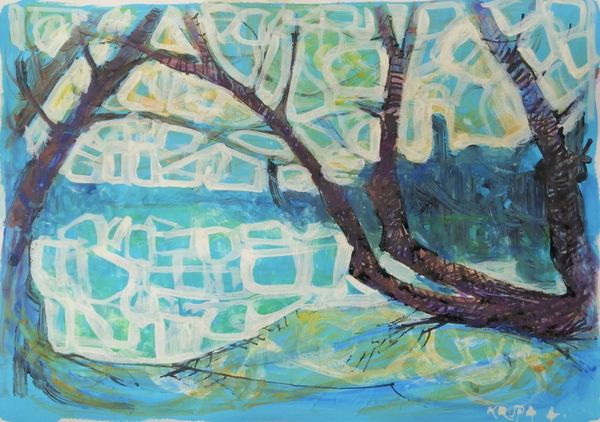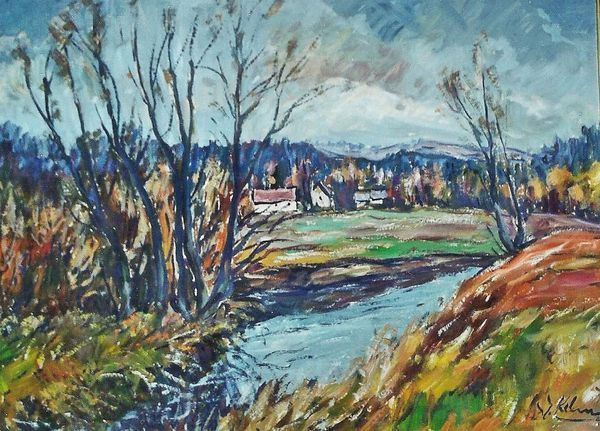
Copyright: Creative Commons NonCommercial
Editor: So, here we have Alfred Krupa's "The Puddle" from 1967, a watercolor work. I find the dark outlines surrounding the lighter washes give it an almost graphic, melancholic feel. What do you see in this piece? Curator: What I find immediately striking is the artist's use of line and form. Consider the thick, gestural brushstrokes that define the banks of the puddle and the sky. They aren't merely representational, are they? Editor: I agree. They seem to be about capturing a feeling more than a photographic likeness. Is that the intention, do you think? Curator: Precisely! Notice how the contrast between the dark outlines and the paler washes within creates a sense of depth and texture, yet simultaneously flattens the picture plane. There’s a tension there, a deliberate ambiguity. Observe the water, how would you describe it? Editor: The way the lily pads are simplified to near circles makes the puddle feel very stylized. The brushstrokes that indicate the water’s surface, broken only by these circular forms… it's almost jarring. Curator: Precisely! And what of the relationship between those negative spaces created by the circles and the marks made by the artist? How do they balance each other formally? Editor: I hadn't considered that…The tension you mentioned plays out on different layers, I think. Considering the balance between chaos and control and the overall composition, the negative space complements the darkness, giving space for one's eyes to not get completely lost in the brushstrokes. Curator: An astute observation. Ultimately, this formal analysis allows us to consider how "The Puddle" achieves its emotional impact, not through depiction alone, but through its manipulation of the fundamental elements of art. Editor: Thanks, seeing it that way definitely reframes my understanding. I can see so much more to this work than initially thought.
Comments
No comments
Be the first to comment and join the conversation on the ultimate creative platform.
